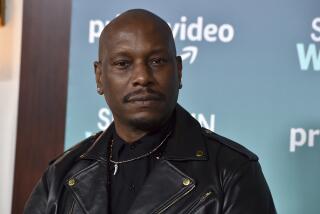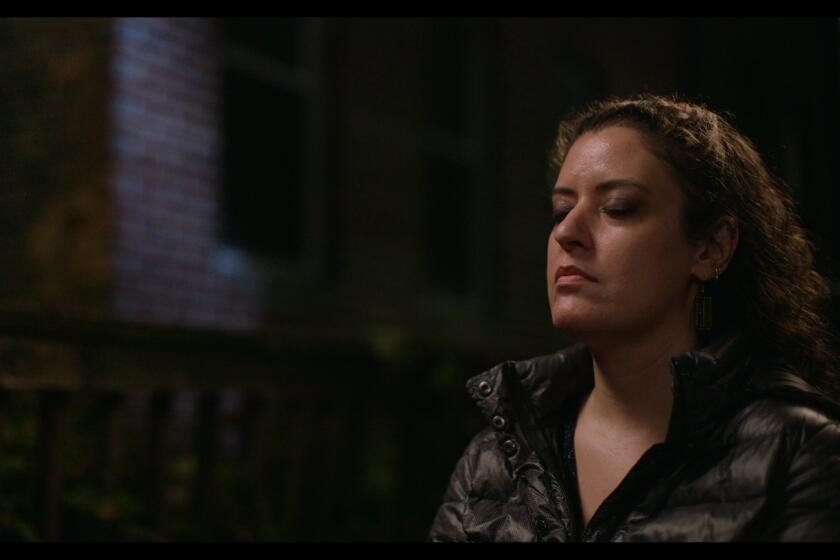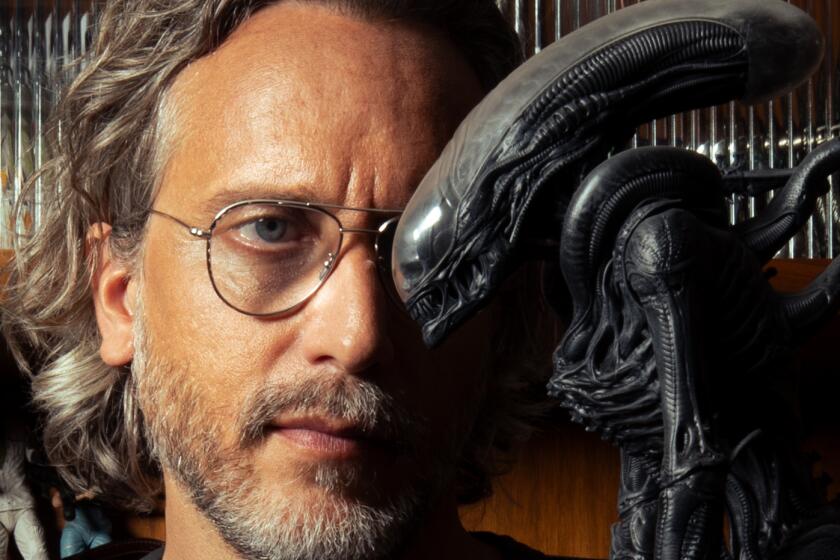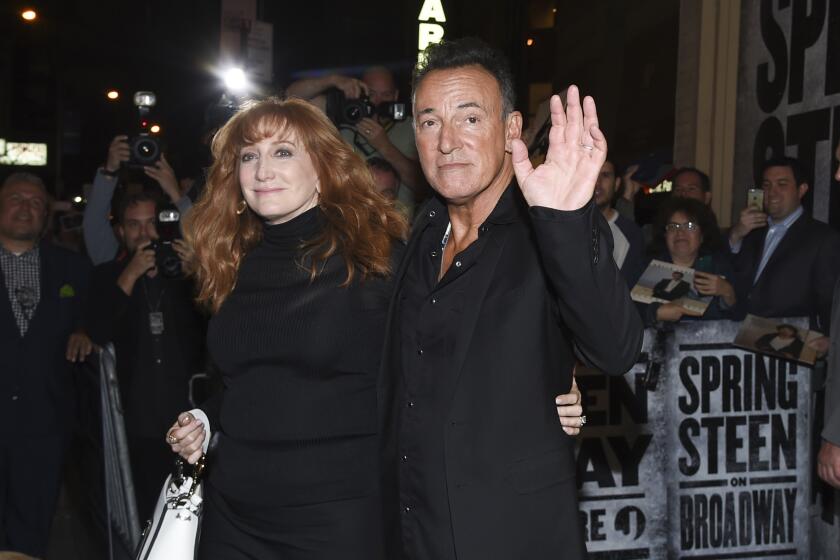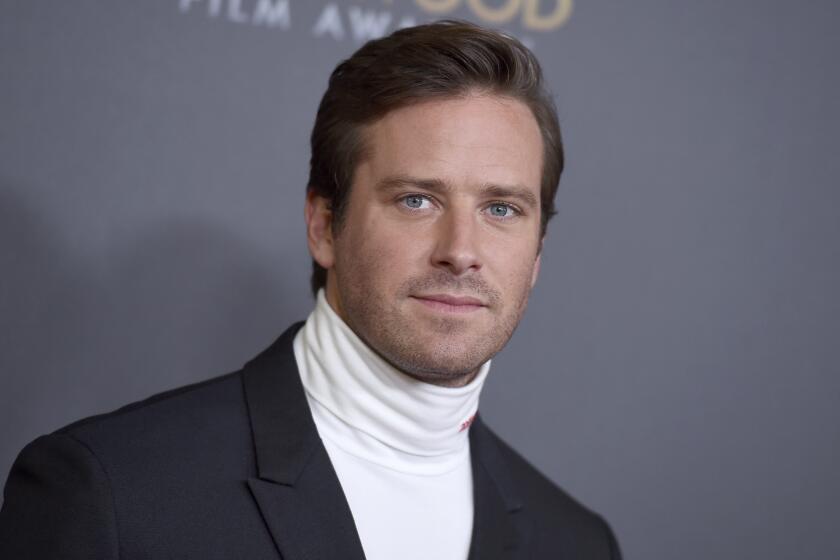He’s just faking it
At his best, Richard Gere has always had a bit of the cad -- the callow narcissism of “Looking for Mr. Goodbar,” tempered by desperation in “Days of Heaven” or “American Gigolo,” dipping into misogyny in “An Officer and a Gentleman” (and outright misanthropy in “Internal Affairs”), and mellowing into a kind of unctuous bemusement with “Pretty Woman,” “Chicago” and now “The Hoax” (a Miramax project opening Friday).
“Grotowski always said an actor basically has one character,” says Gere, conjuring Polish avant-garde theater director Jerzy Grotowski at a recent stopover at the Four Seasons. The actor was just back from testifying before “the Pelosi House” on Tibet, one of his proprietary social causes.
“ ‘Internal Affairs’ is the big one with critics, because the role itself has a flamboyance that’s not bounded by convention. Those are fun to do, but they’re the easiest roles to play; they offer more energy and scope. Any actor will tell you that playing normal is far more difficult.”
Which perhaps helps to explain why the 57-year-old actor has never been among perennial Oscar favorites, despite having starred in films for Terrence Malick, Richard Brooks, John Schlesinger, Paul Schrader, Taylor Hackford, Francis Coppola, Bruce Beresford, Sidney Lumet, Mike Figgis (twice), Garry Marshall (twice), Rob Marshall, Adrian Lyne, Robert Altman and Akira Kurosawa.
In “The Hoax,” Gere splits the difference, employing a shaved hairline and prosthetic nose and tapping into a rich vein of curdled raffishness for his portrayal of Clifford Irving, the playboy novelist, serial philanderer and self-aggrandizing con man who channeled Howard Hughes just long enough to bilk McGraw-Hill out of a cool million. It also marks only his third time playing a historical figure, after King David and Sir Lancelot.
“Those are both mythic creatures; Clifford’s very real,” says Gere of the profile subject he purposefully never met. “I cut my hair back because I liked all that skin, and heels like this” -- he holds his thumb and forefinger inches apart. “I think it was the height and that forehead and that weird problem with his nose -- it was Richard III: That was his hump. He did nothing to disguise it. He was a very frontal person -- you could see him in these films, he was always leaning forward with these big gestures. Or this professorial thing of finding maybe a little more grandiose word than was needed in the moment. There’s a flaw there, and it’s on his face, and it’s between him and every interaction he has in the movie.”
Seeing is believing
ALONG with Irving’s nonfiction book “The Hoax” and the infamous “The Autobiography of Howard Hughes,” which launched the whole affair (finally published in limited edition in 1999 and available as a download on Irving’s website), Gere claims he worked mainly from the visual record -- particularly Irving’s two appearances on “60 Minutes”: the first in 1972 and again in 2000, in which Irving and Mike Wallace watch the original footage and Irving admits all.
The second interview is included on the Criterion DVD of Orson Welles’ final essay film, “F for Fake,” which began as a profile of master art forger Elmyr de Hory, Irving’s Ibiza neighbor, whom he profiled in his 1969 book “Fake!” and lionizes in the film. But “Fake” quickly expands to a meditation on authenticity as the Irving-Hughes events overtake them. Watch Irving, who looks like Adam West circa “Batman,” tell the story of offering an organic prune to the desiccated Hughes, then see Gere re-create the scene in “The Hoax,” and you realize how gifted Gere is as a mimic.
“To have a guy on ’60 Minutes’ that’s lying, and to be able to play that over and over again -- for an actor, that’s really revelatory,” says Gere. “And then later on [in the second interview] -- he’s bald now, the kind of dashing thing is gone, but you can also see he’s found a way to absorb the reality of that into a new myth, that embraces both past and present, where he still comes out OK.”
Irving may have inadvertently inspired Watergate, as the film suggests (Gere consulted “Goodfellas” author Nicholas Pileggi, who told him, “Everyone knows that.”), but he also prefigured it. At least in the age of television, he may have been the first public figure to attempt to lie on quite that big a scale -- or at least the first one to be caught. It was Watergate that proved such a thing was possible.
“It’s a movie about lying -- how small lies connect to big lies,” says Gere, who suffered a broken rib at the 1967 March on the Pentagon and went to great lengths (he intimates) to avoid the draft. “And the big lies in 1971 are very similar to the big lies now: We had a war going on that started with a lie -- the Gulf of Tonkin; we have a war here that started with a series of lies that are still continuing. And a Democratic Congress now wants to hold hearings to delve into this secret government we’ve had for six years.
“I haven’t met Clifford, and yet I’ve talked constantly about him for the last three days. I played him for the two or three months we shot the movie. I put all the research around me, just like Clifford did for Howard Hughes. And now I’m sure Clifford will start to see himself differently, having seen me portray him. The resonances here and the circles within circles never stop.”
More to Read
Only good movies
Get the Indie Focus newsletter, Mark Olsen's weekly guide to the world of cinema.
You may occasionally receive promotional content from the Los Angeles Times.


